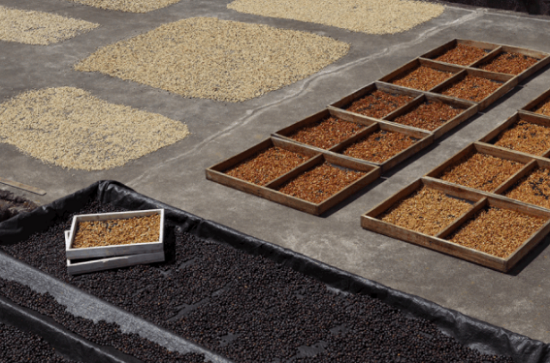How does Peruvian coffee taste?
As one of the top ten coffee producers in the world, Peru is located in the west of South America, covering an area of 1285216 square meters. It borders Ecuador and Colombia in the north, Brazil and Bolivia in the east, Chile in the south, Bolivia in the southeast, and the Pacific Ocean in the west. It has a unique geographical environment and the diversity of climate brings advantages to its coffee cultivation.
According to the International Coffee Organization, Peru produces 3.8 million bags (60kg/ bag) of coffee, which translates to about 230,000 kilograms. Almost all Arabica trees are grown in the country, with common varieties including Ironcard, Bourbon, Kadouai, Kadura, New World and Pache. Most of the planting elevation is above 1000 meters, and the treatment method is mainly washing. It can be divided into three regions: Amazon, Cajamarca, Piura and SAN Martin in the north, Vanuco, Pasco and Junin in the middle, and Ayacucho, Cusco and Puno in the south.
Peruvian coffee has a nutty, chocolaty flavor, a charming aroma, a comfortable fruit acid, a good body, and a balanced taste. Although the complexity is low, but there are also excellent performance of the variety, unique flavor and outstanding sweet taste.
Peru was one of the first American countries to grow coffee, beginning in the 18th century. But in the early days coffee was mostly consumed domestically and exported only in the early 20th century. Unlike other countries, Peru's coffee economy is independent and fragmented, dominated by smallholder farmers. The lack of financial and technical support limits the farmers' access to more resources and markets.
Many small farmers have become members of cooperatives through government assistance, and the coffee they grow has been certified by organic coffee, Fair Trade, Rainforest Alliance, etc. (It should be noted that the organic certification in foreign countries is not recognized in China), so Peru's coffee cultivation has been developing well. More and more land is being used to grow coffee, which has become Peru's most important agricultural export.
As one of the top ten coffee producers in the world, Peru is located in the west of South America, covering an area of 1285216 square meters. It borders Ecuador and Colombia in the north, Brazil and Bolivia in the east, Chile in the south, Bolivia in the southeast, and the Pacific Ocean in the west. It has a unique geographical environment and the diversity of climate brings advantages to its coffee cultivation.
According to the International Coffee Organization, Peru produces 3.8 million bags (60kg/ bag) of coffee, which translates to about 230,000 kilograms. Almost all Arabica trees are grown in the country, with common varieties including Ironcard, Bourbon, Kadouai, Kadura, New World and Pache. Most of the planting elevation is above 1000 meters, and the treatment method is mainly washing. It can be divided into three regions: Amazon, Cajamarca, Piura and SAN Martin in the north, Vanuco, Pasco and Junin in the middle, and Ayacucho, Cusco and Puno in the south.
 Peruvian coffee has a nutty, chocolaty flavor, a charming aroma, a comfortable fruit acid, a good body, and a balanced taste. Although the complexity is low, but there are also excellent performance of the variety, unique flavor and outstanding sweet taste.
Peru was one of the first American countries to grow coffee, beginning in the 18th century. But in the early days coffee was mostly consumed domestically and exported only in the early 20th century. Unlike other countries, Peru's coffee economy is independent and fragmented, dominated by smallholder farmers. The lack of financial and technical support limits the farmers' access to more resources and markets.
Many small farmers have become members of cooperatives through government assistance, and the coffee they grow has been certified by organic coffee, Fair Trade, Rainforest Alliance, etc. (It should be noted that the organic certification in foreign countries is not recognized in China), so Peru's coffee cultivation has been developing well. More and more land is being used to grow coffee, which has become Peru's most important agricultural export.
Peruvian coffee has a nutty, chocolaty flavor, a charming aroma, a comfortable fruit acid, a good body, and a balanced taste. Although the complexity is low, but there are also excellent performance of the variety, unique flavor and outstanding sweet taste.
Peru was one of the first American countries to grow coffee, beginning in the 18th century. But in the early days coffee was mostly consumed domestically and exported only in the early 20th century. Unlike other countries, Peru's coffee economy is independent and fragmented, dominated by smallholder farmers. The lack of financial and technical support limits the farmers' access to more resources and markets.
Many small farmers have become members of cooperatives through government assistance, and the coffee they grow has been certified by organic coffee, Fair Trade, Rainforest Alliance, etc. (It should be noted that the organic certification in foreign countries is not recognized in China), so Peru's coffee cultivation has been developing well. More and more land is being used to grow coffee, which has become Peru's most important agricultural export.
